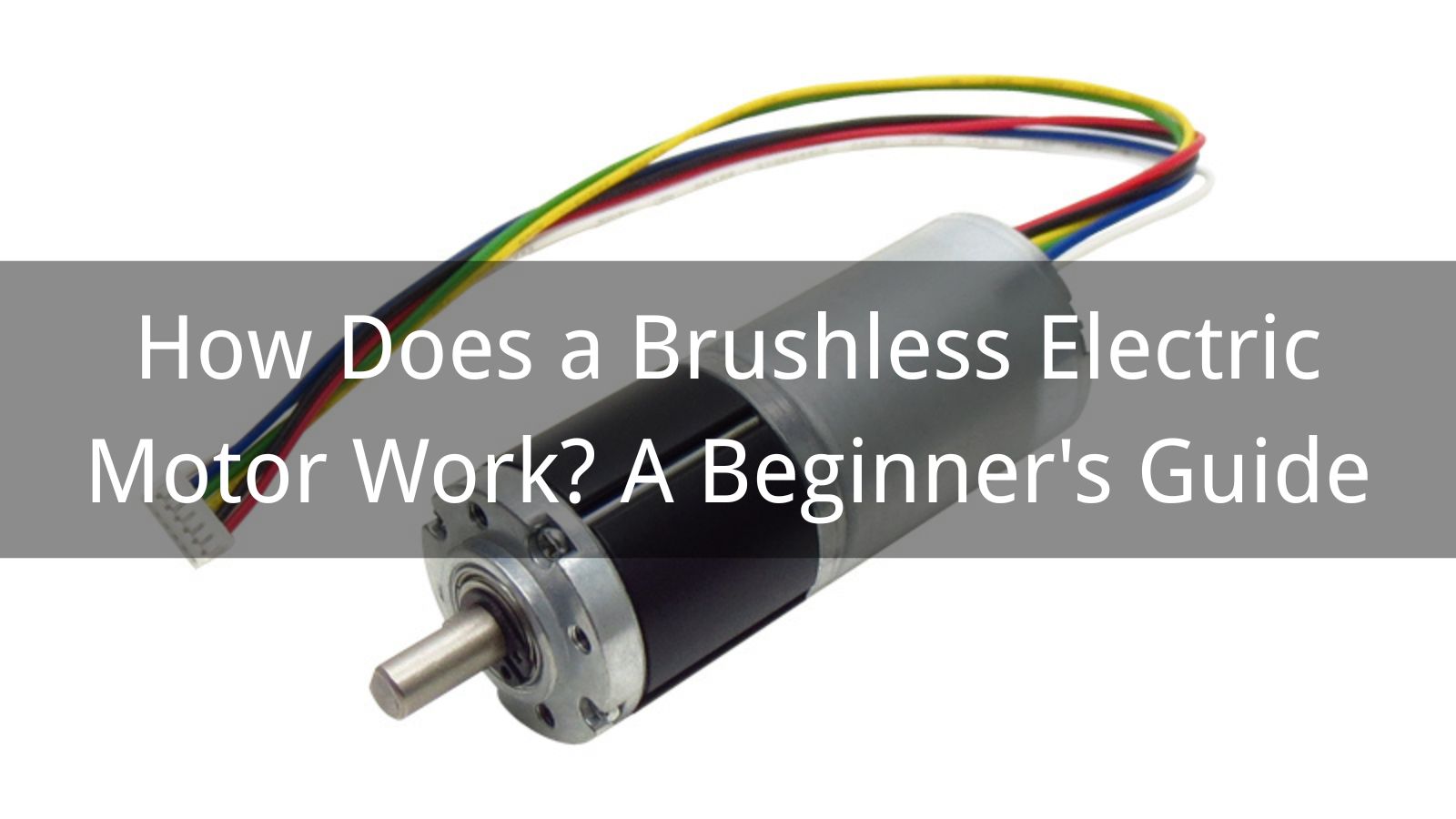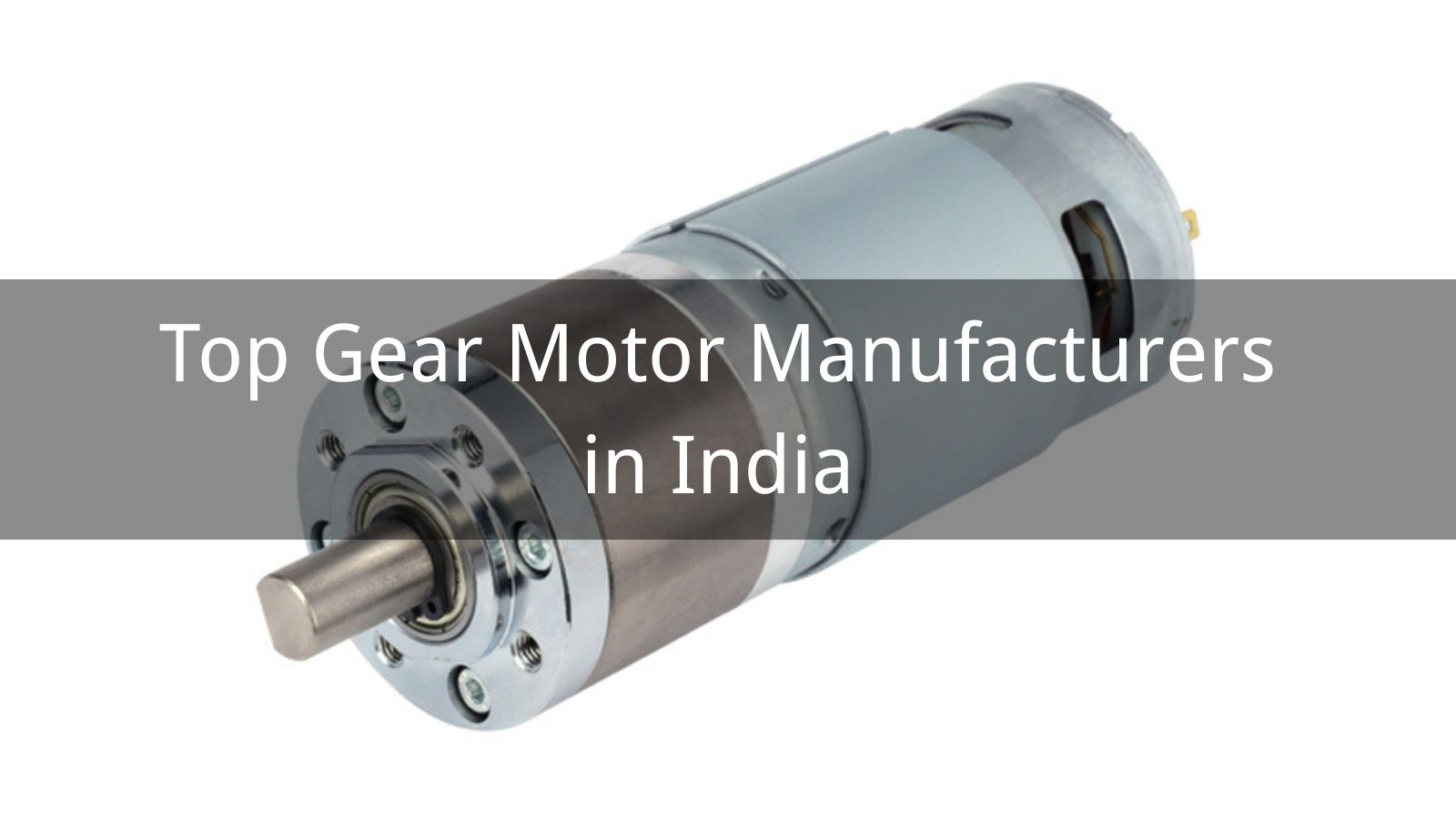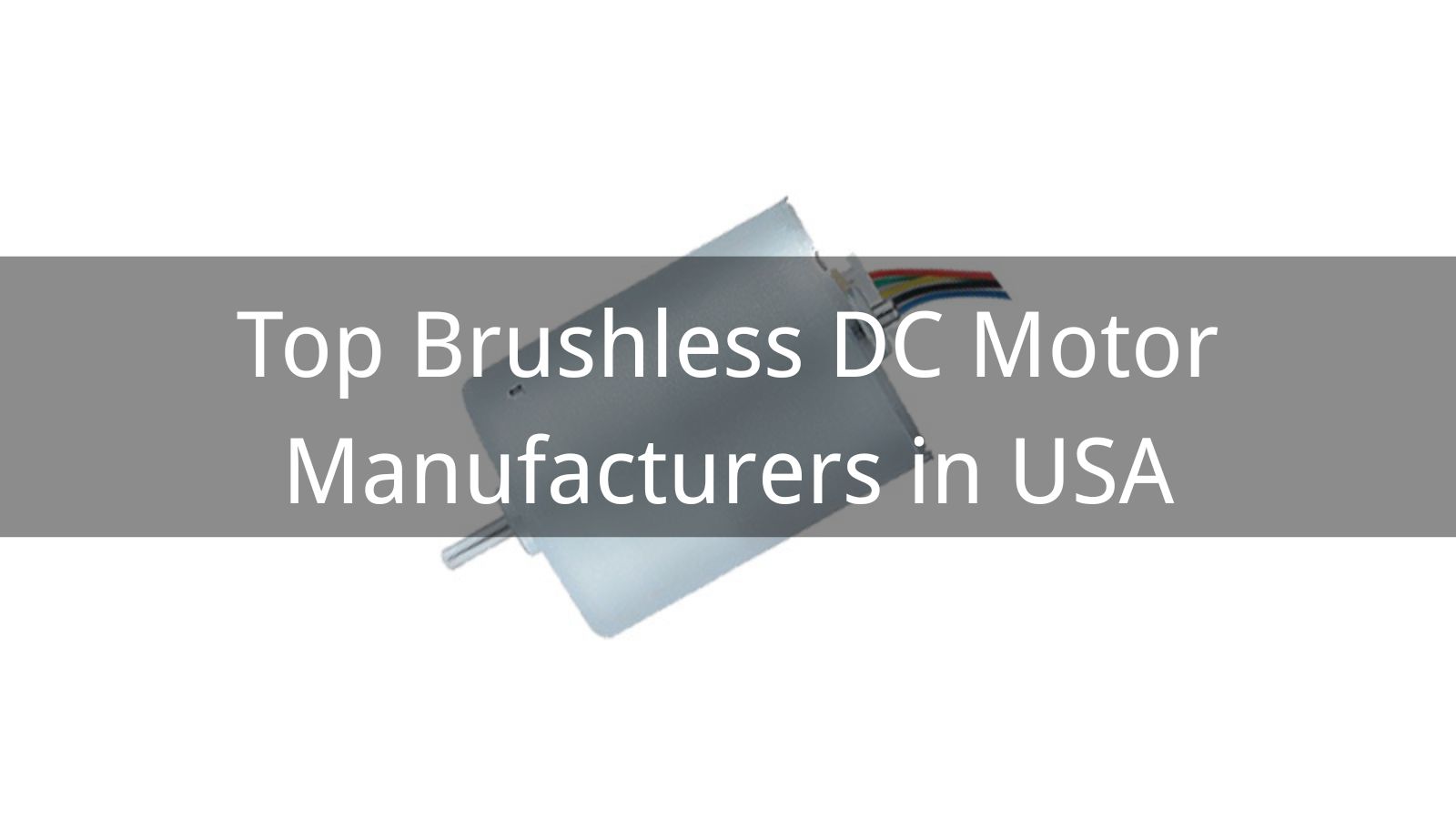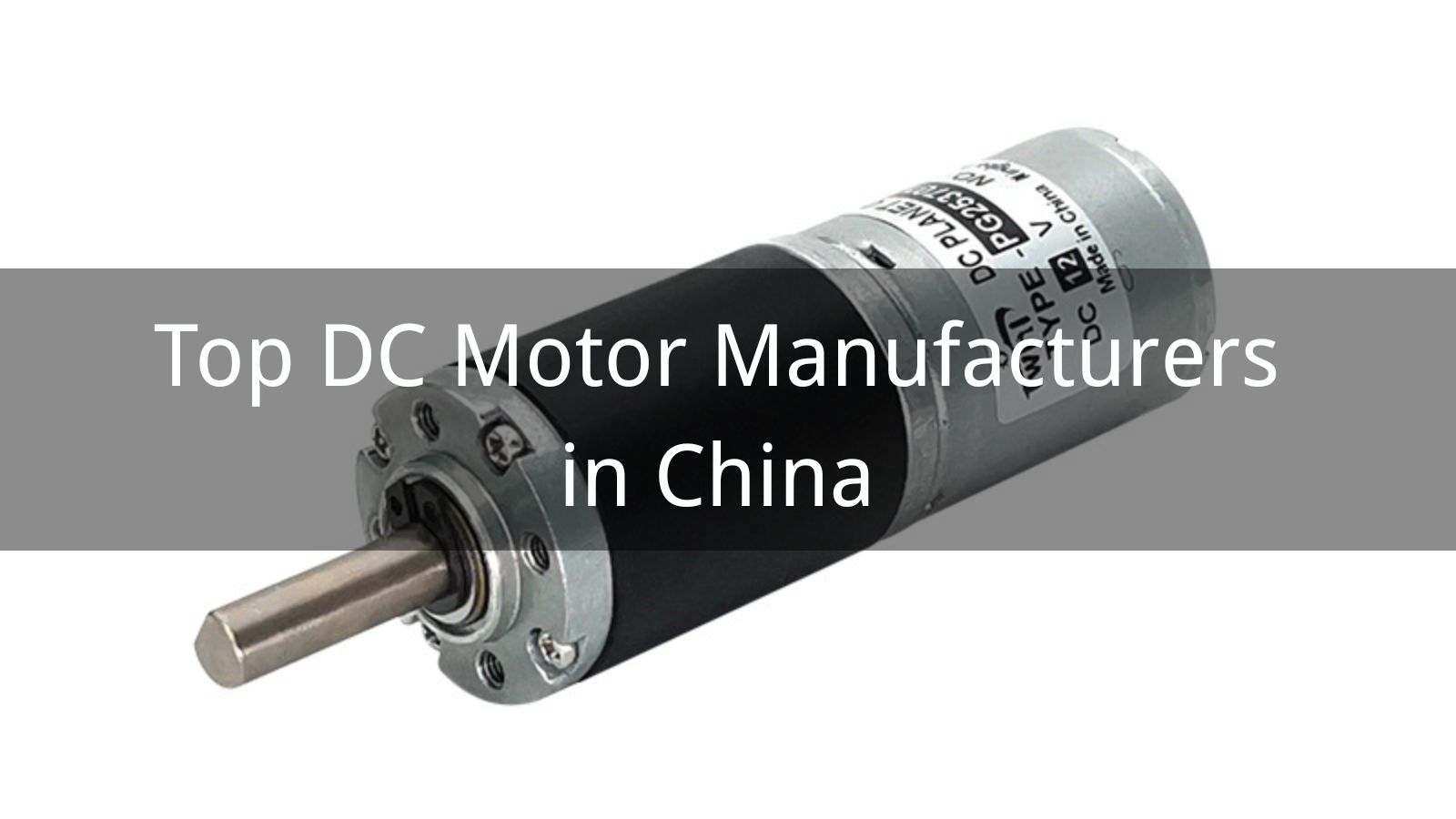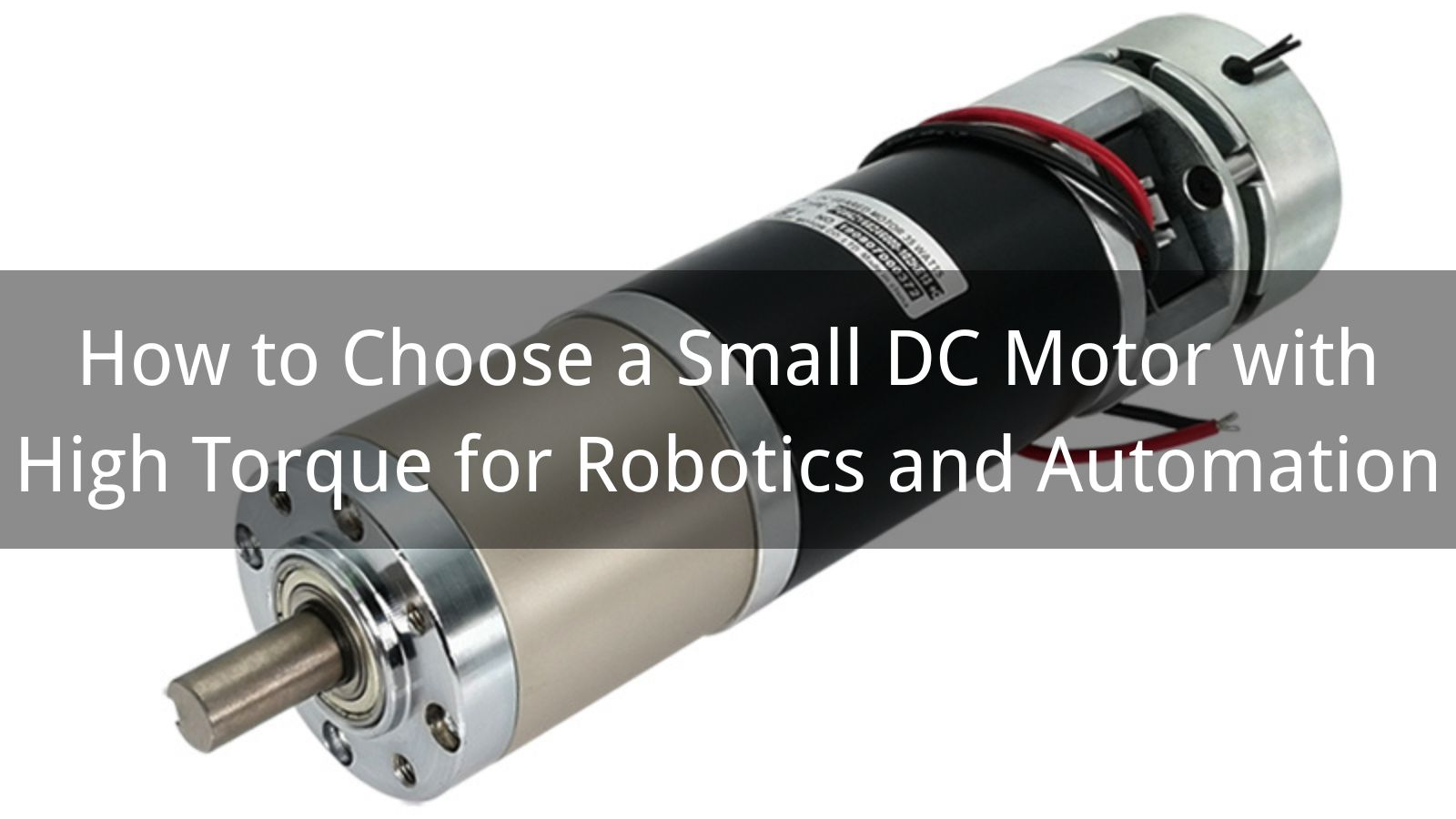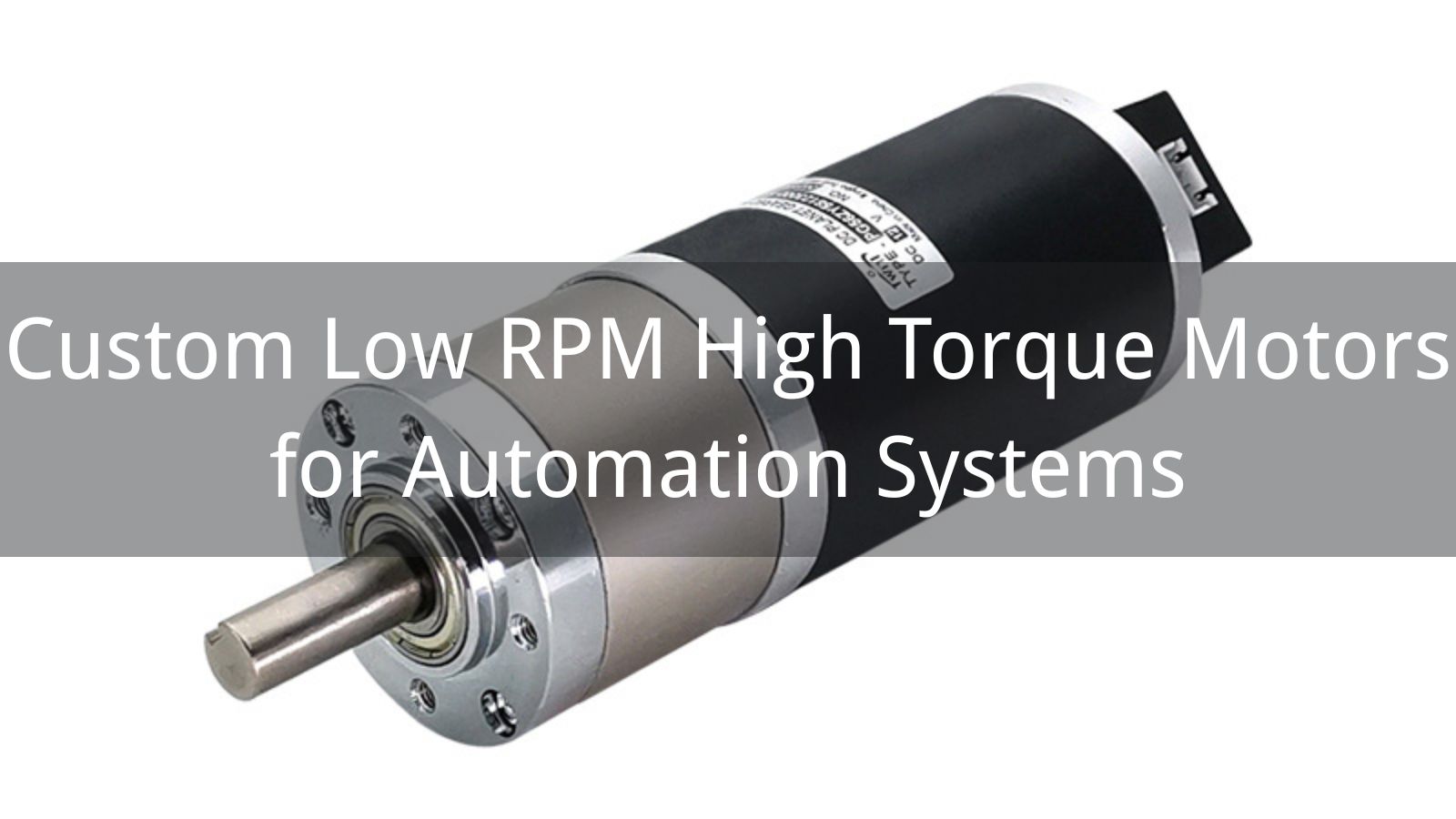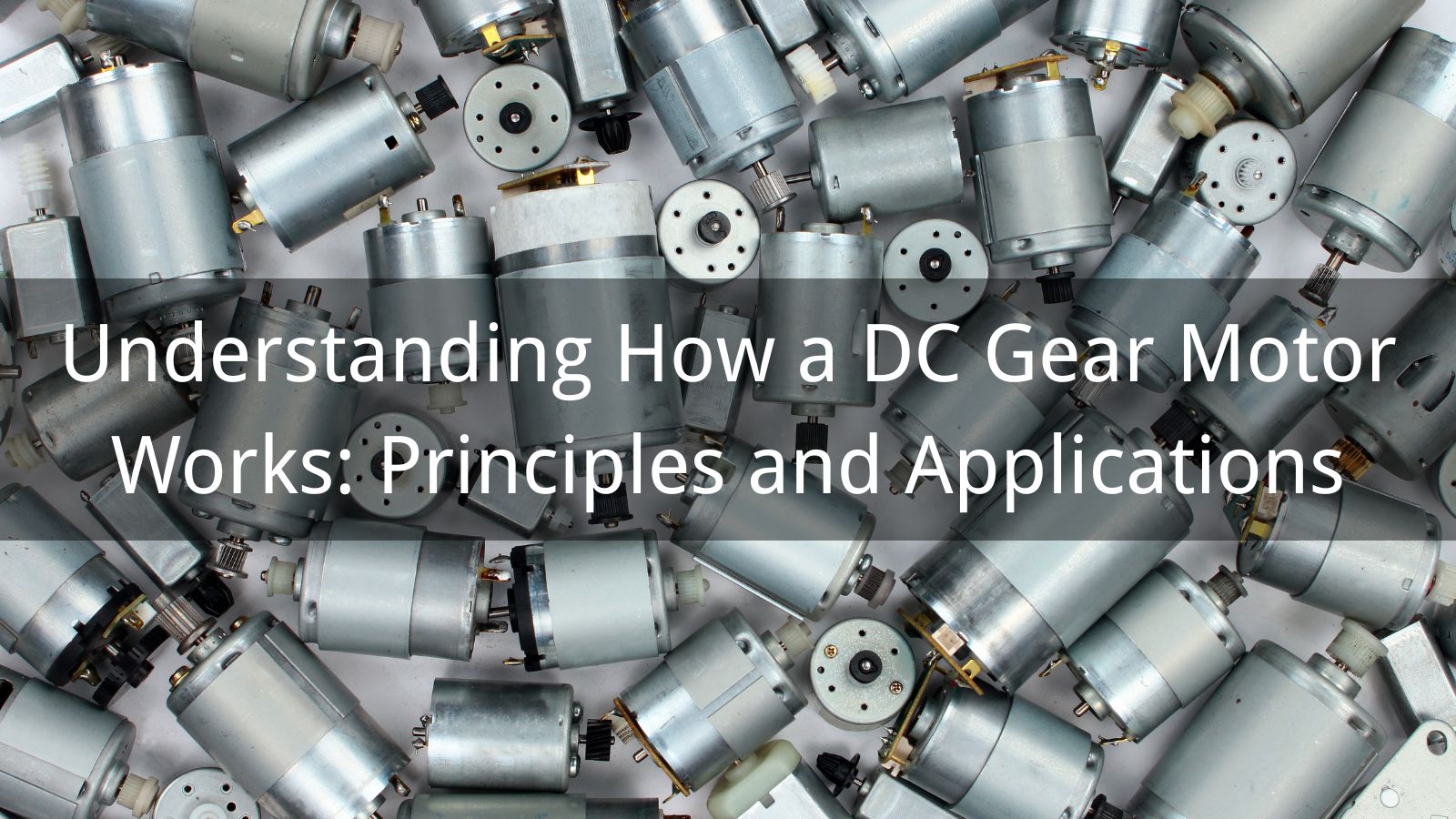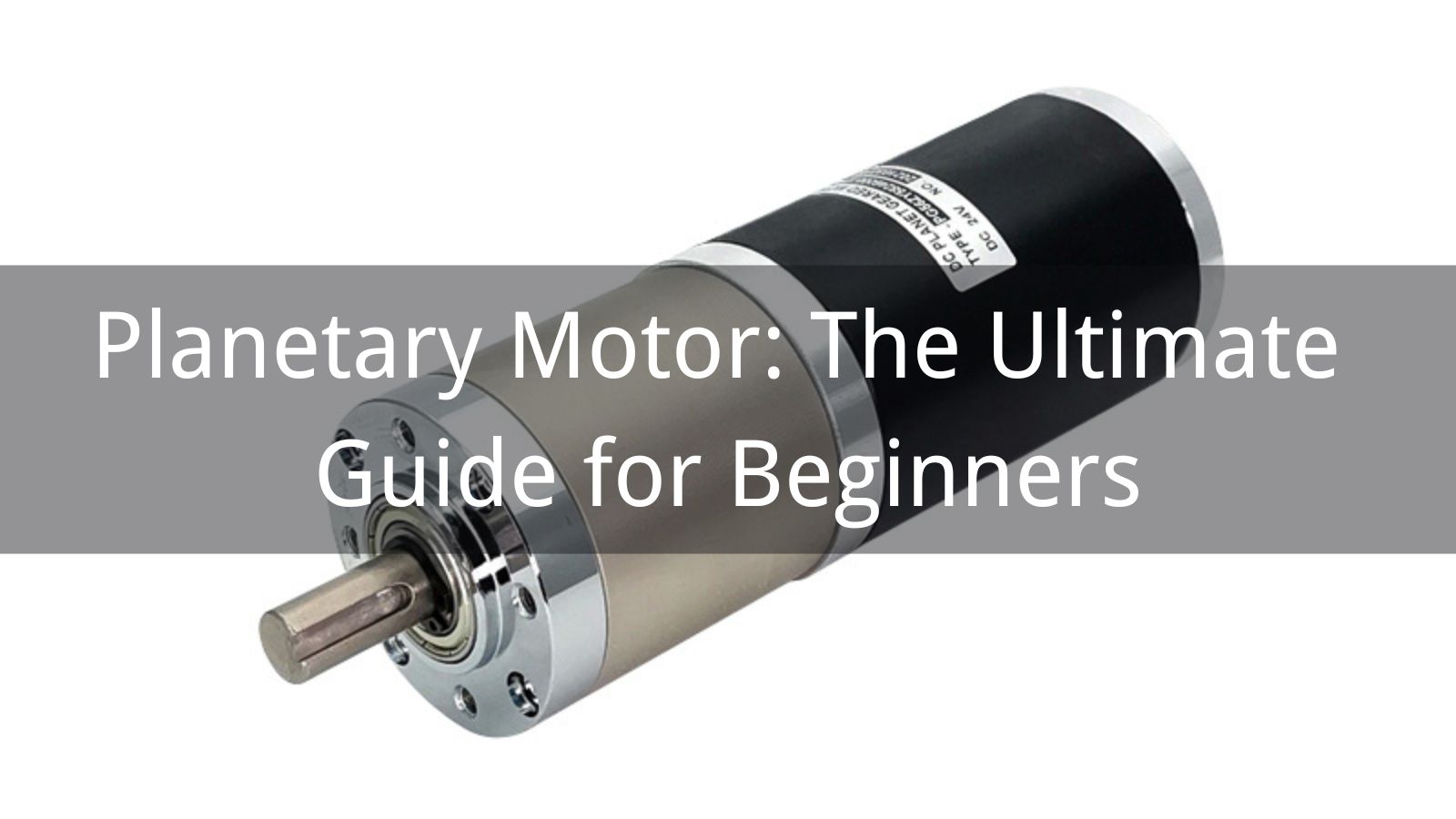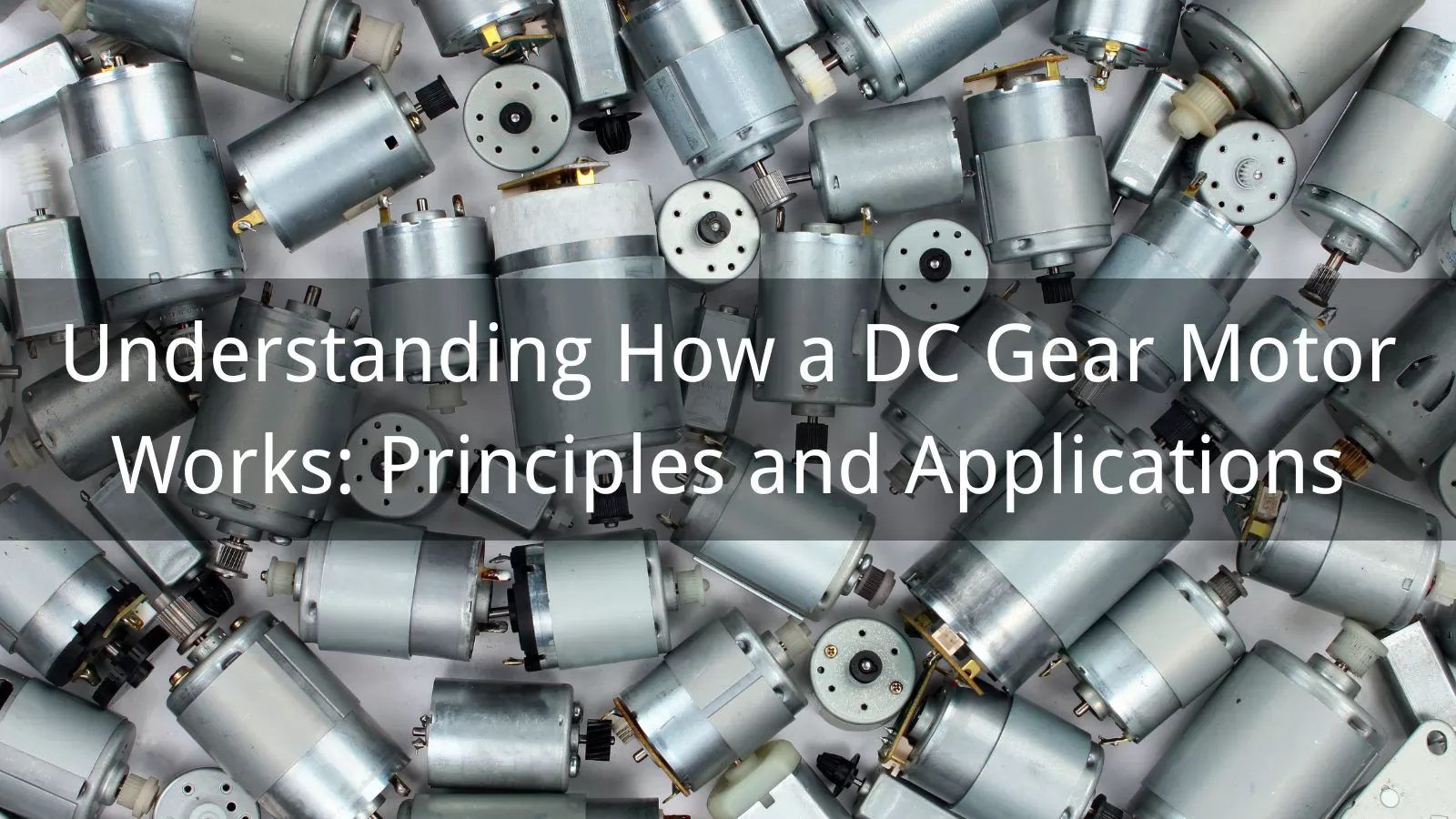
A DC gear motor is a compact yet powerful solution that combines the precision of a DC motor with the torque-boosting advantages of a gearbox. Designed for efficiency and control, this motor type converts electrical energy into mechanical motion while reducing speed and increasing torque through a precise gear ratio.
Understanding how a DC gear motor works is crucial for engineers, product designers, and automation specialists who need consistent performance and long service life. By learning its working principles, internal structure, and key components, users can make informed decisions when selecting the right motor for robotics, smart home devices, medical instruments, and industrial automation systems.
From automotive actuators and conveyor systems to electric locks and robotic arms, DC geared motors deliver high torque, stable speed control, and superior energy efficiency in a compact design. This complete guide explores the DC gear motor working principle, its main features, and real-world applications, helping you choose the ideal motor for your specific needs.
A DC gear motor is an electromechanical device that combines a direct current (DC) motor with a gearbox to achieve precise speed control and high torque output. By integrating gears into the motor assembly, a DC geared motor effectively reduces rotational speed while multiplying torque, allowing it to deliver powerful and controlled motion.
Unlike a standard DC motor, which typically runs at high speeds but offers limited torque, a DC gear motor provides the ideal balance between speed, torque, and efficiency. This makes it a preferred choice in applications where precise movement, load stability, and energy efficiency are critical — such as in robotics, automation systems, medical devices, and industrial machinery.
Understanding how a DC gear motor works helps engineers and manufacturers select the right motor type for their specific needs. Whether it’s driving a conveyor belt, adjusting a robotic joint, or powering smart home equipment, DC gear motors deliver consistent performance, long service life, and high adaptability. Thanks to their compact size and customizable gear ratios, they have become indispensable in modern motion control and automation industries.
A DC gear motor—also known as a DC geared motor—operates by combining a direct current (DC) motor with a precision gearbox that adjusts the motor’s speed and torque to suit specific application requirements. The DC motor converts electrical energy into mechanical rotation, while the integrated gear system reduces rotational speed and increases torque output. This gear reduction mechanism enhances control, efficiency, and durability, allowing the motor to deliver powerful yet precise motion even in compact designs.
Understanding how a DC gear motor works is key to choosing the right motor configuration for your project. Different gear ratios and motor types—such as spur, planetary, or worm gear systems—affect performance characteristics like speed stability, load capacity, and noise level. Thanks to their balance of high torque and low speed, DC gear motors are widely used in robotics, automation systems, smart devices, and industrial machinery where consistent and reliable motion control is critical.
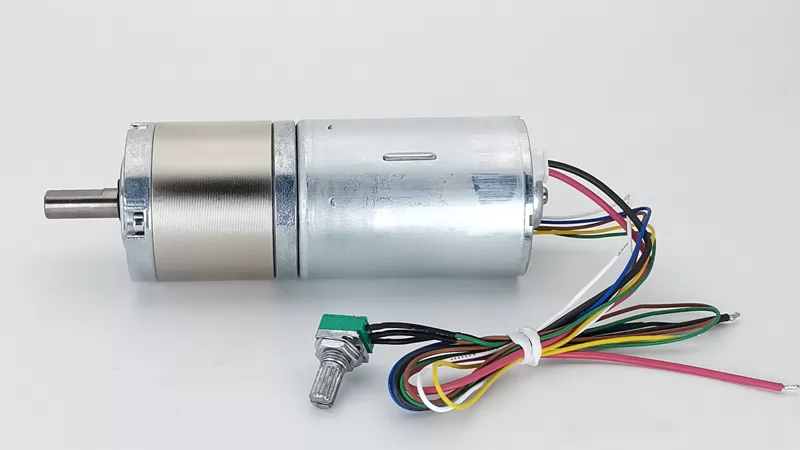
A DC gear motor—also known as a DC geared motor—consists of several critical components that determine its performance, efficiency, and lifespan. The motor housing provides structural support and protects internal elements from dust, heat, and vibration, ensuring long-term durability. Inside, the gearbox (or gear train) plays a vital role by reducing speed and multiplying torque, which allows the DC gear motor to deliver high torque at low speed—ideal for automation systems, robotics, and industrial machinery.
The shaft and bearings ensure smooth power transmission with minimal friction and noise, contributing to the motor's stability and operational precision. Meanwhile, brushes, commutators, and electronic control circuits manage current flow and regulate motor speed for consistent and energy-efficient performance.
By understanding these DC gear motor components and how they interact, engineers and manufacturers can make informed decisions when selecting or designing motors for specific applications. This insight not only clarifies how a DC gear motor works but also highlights why it remains essential across modern industries that demand precision, reliability, and compact power solutions.
When it comes to choosing the right DC gear motor, understanding the different types and their characteristics is essential. Each type of DC geared motor offers unique advantages depending on your application — from robotics and automation to household appliances and industrial machinery. Below is an in-depth look at the most common types of DC gear motors, their designs, and best-use cases.
Brushed DC Gear Motors
Brushed DC gear motors are among the most traditional and widely used types of DC geared motors. They utilize brushes and a commutator to transfer electrical current to the motor windings, resulting in smooth torque and reliable performance.
Key Advantages: Simple design, easy control, and cost-effectiveness.
Performance: Deliver high torque at low speeds, making them ideal for small automation systems and low-cost projects.
Applications: Commonly found in toys, household appliances, small conveyors, and low-power actuators.
Considerations: Since brushes wear out over time, these DC gear motors require periodic maintenance and may generate slight electrical noise during operation.
Brushless DC Gear Motors
Brushless DC gear motors (BLDC gear motors) represent a modern, efficient evolution of traditional brushed models. Instead of mechanical brushes, they rely on electronic commutation, which significantly improves durability and performance.
Efficiency & Lifespan: The absence of brushes eliminates friction loss, offering higher efficiency, quieter operation, and longer service life.
Precision: Brushless DC gear motors deliver smoother torque and superior speed control, making them ideal for precise motion applications.
Applications: Widely used in robotics, drones, 3D printers, medical equipment, and electric bicycles, where accuracy, reliability, and energy savings are crucial.
Why Choose Brushless: If your system requires long operating life, minimal maintenance, and compact high-torque output, the brushless DC gear motor is the preferred choice.
Planetary Gear DC Motors
The planetary gear DC motor stands out for its compact structure and exceptional torque density. In this configuration, multiple planet gears rotate around a central sun gear inside a ring gear, distributing the load evenly across all gears.
Design Benefits: The planetary gearbox provides high torque in a small size, low backlash, and high efficiency.
Durability: The distributed load reduces wear and enhances the motor’s service life, making it ideal for heavy-duty and continuous-use applications.
Applications: Common in industrial automation, conveyor systems, electric vehicles, and robotic arms, where space efficiency and torque stability are key.
Performance Insight: Compared to a spur gear DC motor, a planetary DC gear motor offers better torque transmission and superior load handling, especially in compact installations.
High Torque at Low Speeds
One of the main advantages of a DC gear motor—also known as a DC geared motor—is its ability to deliver high torque even at low speeds. The integrated gearhead reduces the motor’s output speed while increasing torque, providing the power needed for demanding applications such as robotics, automated conveyors, medical devices, and industrial automation systems.This high-torque, low-speed performance allows for smooth and precise motion control, making DC gear motors ideal for equipment that requires stable speed and strong output in compact spaces.
Compact and Space-Saving Design
Compared to other types of drive systems, a DC gear motor combines the motor and gearbox into one compact housing. This space-saving design makes it lightweight, efficient, and easy to integrate into various mechanical assemblies.Engineers often choose gearhead DC motors for portable tools, smart home devices, and compact industrial machines where installation space is limited but performance cannot be compromised.
Energy Efficiency and Cost-Effectiveness
Modern DC geared motors are designed for efficient power transmission, minimizing energy loss and heat generation. The optimized gear ratio ensures that most of the input energy is converted into useful mechanical output.Because of their high efficiency and long operational lifespan, DC gear motors significantly reduce operational costs. This makes them a cost-effective solution for manufacturers seeking energy-saving yet powerful motion control systems in both consumer and industrial sectors.
Versatility Across Applications
The adaptability of DC gear motors is another key reason for their widespread use. They can be customized for various DC gear motor applications, including automotive systems (seat adjusters, wipers, and window lifts), smart home appliances, vending machines, and industrial robots.With adjustable torque and speed configurations, DC gear motors can handle diverse operational conditions—whether it’s continuous motion, intermittent load, or variable speed environments.
Durability and Long-Term Reliability
Built with high-quality gears, precision bearings, and durable housings, DC gear motors offer exceptional reliability and long service life. Their robust mechanical design minimizes wear and tear, ensuring smooth performance with minimal maintenance.This durability is critical for mission-critical equipment, such as conveyor systems, security devices, and laboratory automation, where any downtime can disrupt production. The reliability of a well-engineered DC gear motor guarantees consistent performance and long-term value for industrial users.
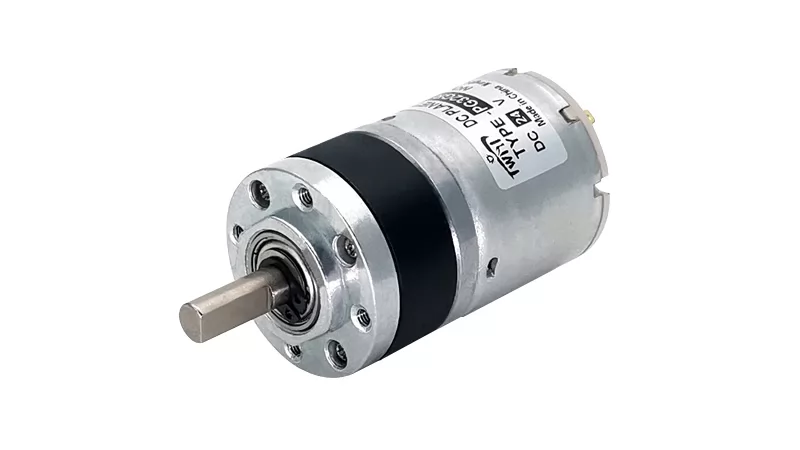
DC gear motors are essential components in modern industry, offering high torque and precise speed control in a compact design. Their unique ability to deliver consistent performance under varying loads makes them indispensable in numerous industrial applications of DC gear motors.
In robotics and factory automation, DC gear motors provide the reliable power needed for robotic arms, conveyor systems, and automated guided vehicles (AGVs). These high torque, low speed DC motors ensure smooth, controlled movement for repetitive tasks that demand accuracy and efficiency.
In the automotive industry, DC gear motors are integrated into electric vehicle systems, power window lifts, seat adjusters, and mirror actuators. Their compact size and dependable output help enhance comfort, safety, and energy efficiency in both traditional and electric vehicles.
Medical equipment also benefits from miniature DC gear motors, which drive infusion pumps, ventilators, and surgical tools requiring high precision and quiet operation. Meanwhile, consumer electronics such as printers, cameras, and smart home appliances rely on these motors for efficient, low-noise performance.
In industrial machinery, DC gear motors play a critical role in packaging machines, labeling systems, and automated assembly lines, where durability and reliability are vital for continuous operation. By understanding how DC gear motors work and where they excel, engineers and manufacturers can select the right DC geared motor to achieve optimal performance, efficiency, and long-term reliability across various applications.
Choosing the right DC gear motor is essential for achieving high performance, reliability, and energy efficiency in any motion control system. Whether your project involves robotics, industrial automation, or smart equipment, selecting the best motor begins with understanding your specific mechanical and electrical requirements.
Start by analyzing the torque and speed your application demands. The gear ratio of a DC geared motor directly determines output torque and rotational speed—higher ratios provide greater torque but lower speed, ideal for heavy-load automation systems. For lightweight or high-speed operations, opt for a lower gear ratio that ensures smoother and faster motion.
Next, evaluate load capacity, duty cycle, and operating voltage. These parameters must align with your system design to maintain consistent performance and prevent overheating or early wear. A DC gear motor designed for continuous duty will outperform one rated for intermittent use when operating in long production cycles.
Don't overlook customization options. Reputable DC gear motor manufacturers offer tailored gearbox ratios, shaft designs, and mounting configurations that precisely fit your project requirements. This flexibility ensures maximum output efficiency and reduces mechanical stress on connected components.
In addition, consider factors such as noise level, gear material, and efficiency rating, especially for applications like medical devices or service robots where smooth, quiet operation is critical. Choosing a DC gear motor with high-quality bearings and optimized gear alignment helps minimize vibration and extend service life.
Finally, partnering with a trusted DC gear motor manufacturer is the key to long-term success. A reliable supplier not only guarantees product quality and compliance with international standards but also provides ongoing technical support and design assistance. This partnership ensures that your motion system remains stable, cost-effective, and easy to maintain over time.
By carefully comparing specifications, evaluating real-world operating conditions, and working with an experienced manufacturer, you can confidently select the best DC gear motor for your project—one that enhances productivity, minimizes downtime, and delivers exceptional performance across diverse applications.
Understanding how a DC gear motor works is key to unlocking efficiency and precision in modern engineering. These compact yet powerful devices combine high torque output with reliable motion control, making them indispensable in robotics, automation, medical equipment, and consumer electronics. Whether you need a planetary DC gear motor for high precision or a worm gear motor for heavy-duty performance, selecting the right design ensures long-term reliability and optimized results
By choosing a quality DC gear motor that matches your load requirements and speed ratio, you can enhance productivity, reduce maintenance, and extend operational lifespan. Each DC geared motor type—brushed, brushless, or planetary—offers unique advantages for different industrial and commercial gear motor applications.
At Toosyn, we provide a wide range of DC gear motors engineered for innovation and durability. If you're looking to choose the right DC gear motor for your next project, explore our full selection or contact our expert team for personalized guidance. Let's power your success with motion solutions built to perform.
